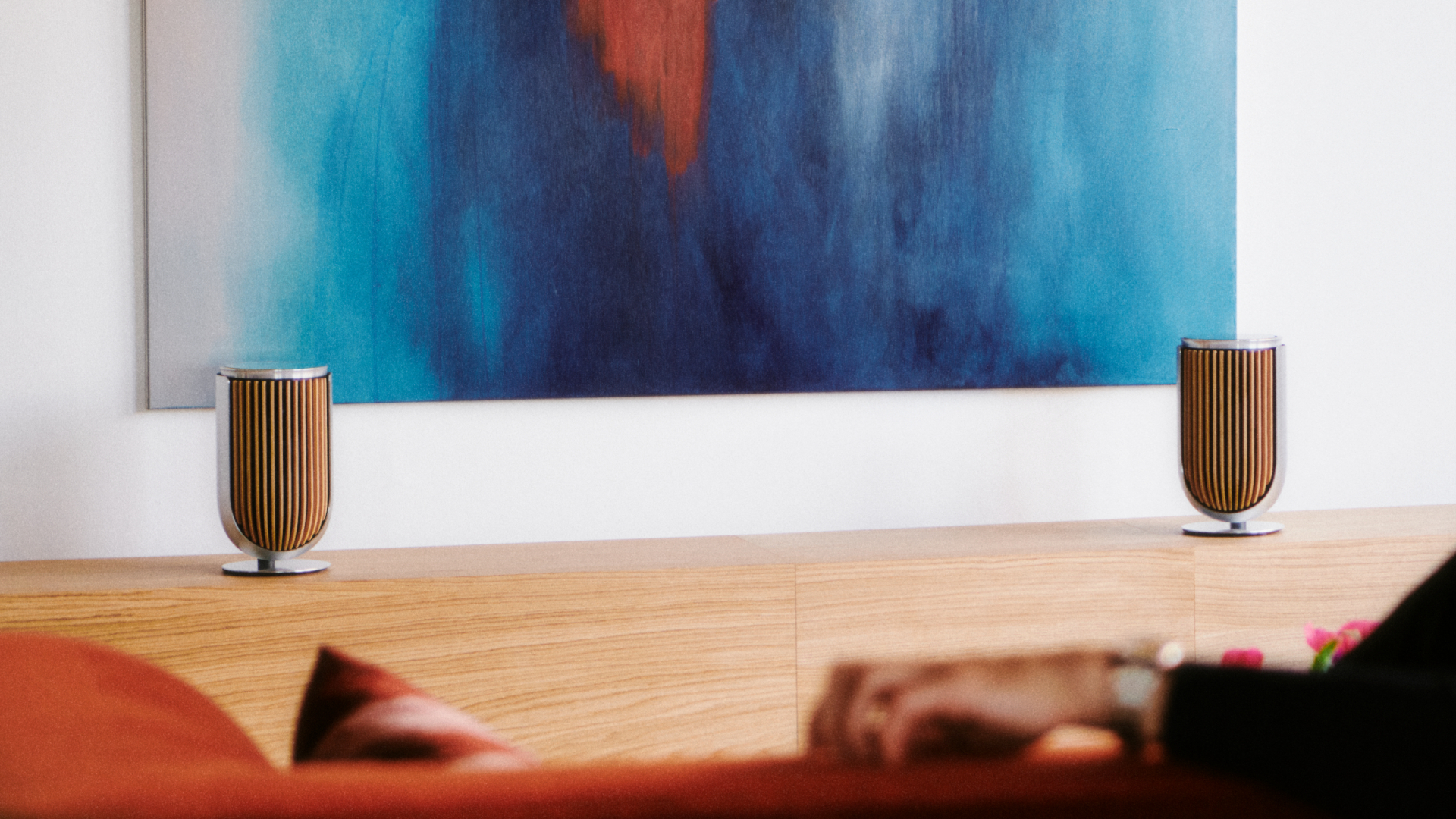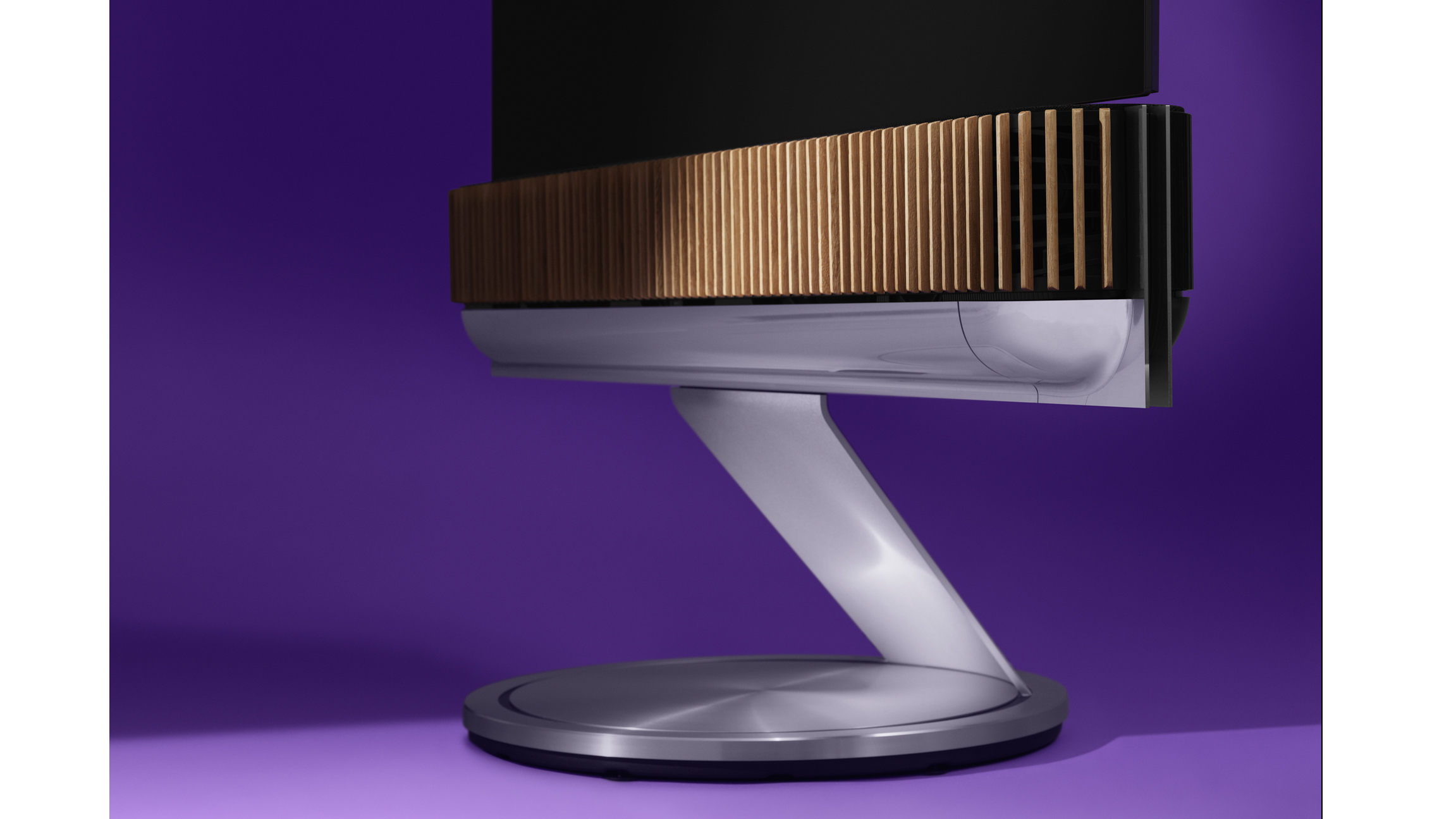How do we make hi-fi sustainable? We asked Bang & Olufsen to find out
Following the launch of the Beolab 8, we caught up with B&O’s sustainability mastermind

Sustainability is a theme in the world of tech at the moment, with everyone from powerhouses like Apple to specialist audio brands like Meze Audio attempting to boost their products' eco-credentials.
But despite the push, we’re yet to see many hi-fi products launch carrying independently audited sustainability credentials.
Eager to learn more about the challenges involved in making eco-friendly hi-fi, we caught up with Bang & Olufsen’s head of product circularity, Mads Kogsgaard Hansen, who just announced the firm's latest sustainability-focused speaker, the Beolab 8. Here’s what he told us.
External auditing
Hansen flagged that one of the main challenges in designing sustainable audio kit is making sure that every aspect of a product, ranging from the materials used to its repairability and even the supply chain, is environmentally friendly. He added that the latter is particularly difficult for most companies to do solo as they don't control their entire supply chain. It was this mix of factors that led Bang & Olufsen to target the cradle-to-cradle standard.
“Last year, B&O made the decision to commit 100 per cent to the Cradle-to-Cradle design principles in all products designed and developed going forward,” he explained.
“The key point is to design for longevity and circularity from the beginning. Buy less, buy better is our mantra, and that resonates really well with our customers.”
Cradle-to-Cradle is a design standard run by the Cradle-to-Cradle Products Innovation Institute. It offers accreditation that marks products as bronze, silver and platinum tiers.
The latest hi-fi, home cinema and tech news, reviews, buying advice and deals, direct to your inbox.
The certification is updated on a yearly basis, based on the latest scientific research and factors in key things like whether the product uses recycled parts, the environmental impact of its supply chain and how easy it is to repair. As an added protection, the accreditation only lasts two years, at which point the product must be recertified using the Institute’s latest standard.
Despite Hansen’s comments, to date, Bang & Olufsen’s Beosound Level and Beosound Emerge are the only products to achieve the institute's lowest standard. Its current Beosound 8 is still running through the certification process and being checked by the institute. The company has pledged to have “at least 10 Cradle-to-Cradle certified products in the portfolio by 2025”.
The difficulty of electronics and need for modularity
According to Hansen, the next biggest challenge for sustainable hi-fi is the fact that electronics and tech in general are moving at such a fast pace, so a product can simply be out of date in a very short space of time, especially if it has smart or wireless functionality.
“Some product categories will be more challenging to design with principles of cradle-to-cradle thinking in mind. At the same time, we know change cannot happen in isolation, we need the entire value chain from raw material suppliers to technology providers to final manufacturing processes, distribution systems, retail and service networks to waste management companies to work in the same direction,” he said.
He added headphones are a good example of these issues.
"For the earphone category specifically, there are a number of factors like the speed at which technology is evolving, a continuous focus on increased miniaturisation [and] the vast complexity of addressing individual ergonomic fit,” he said.
“These factors constitute a very real challenge for implementing modularity at the same level as we have already started to for larger speaker products.”
Hansen is one of many audio experts to flag modern smart functionality and circuitry as a key issue hindering sustainable design. Monitor Audio technical director Michael Hedges made a similar claim during an interview with What Hi-Fi? earlier this year. In it, he argued this is a key reason separates are more sustainable than all-in-one systems.

Modularity and reparability
Hansen said Bang & Olufsen is taking a slightly different approach in its attempt to make more sustainable audio.
Instead of separates, it’s designing its wireless speakers and products to be modular, with the potential to add new functionality, like support for new wi-fi or Bluetooth standards down the line.
We saw this during a demo of the BeoSound Theatre soundbar at IFA 2022. The premium soundbar has an upgradable dock design that aims to let buyers add new functionality to it, using physical hardware as well as software updates.
He added the approach also makes it easier for the firm to service and repair its hardware.
“We already have an ambitious service strategy to support the long lifetime of our products, and our service team in Struer Denmark is already doing more than 25,000 repairs and service tasks every year. We believe that applying modular design across all product categories we operate in will support long life and easy repairability,” he said.
Bang & Olufsen’s push to improve its eco-credentials comes during a boom in the number of audio companies attempting to improve their products’ sustainability.
High-end headphones company Meze Audio designs its products with sustainable wood and is completely glue-free in a bid to make them easier to service and increase their longevity. Apple and Sonos also have public sustainability policies, which include pledges around carbon neutrality and sustainable materials. Both the Apple HomePod 2 and Sonos Era 300 have parts built from recycled materials.
Recently, a wave of audio brands including Marantz, Sonus Faber, McIntosh and Focal have all run trade-in schemes designed to encourage customers to trade in old unneeded hardware for discounts in a bid to reduce the amount of waste the industry generates.
Do you think the hi-fi industry is doing enough to improve its sustainability? Let us know in the comments section, and on Twitter and Facebook!
MORE:
Read our five-star Bang & Olufsen Beosound A1 (2nd Gen) review
Here’s how Bang & Olufsen's Dolby Atmos soundbar is designed to outlive your TV
Our pick of the best Bluetooth speakers we've tested

Alastair is What Hi-Fi?’s editor in chief. He has well over a decade’s experience as a journalist working in both B2C and B2B press. During this time he’s covered everything from the launch of the first Amazon Echo to government cyber security policy. Prior to joining What Hi-Fi? he served as Trusted Reviews’ editor-in-chief. Outside of tech, he has a Masters from King’s College London in Ethics and the Philosophy of Religion, is an enthusiastic, but untalented, guitar player and runs a webcomic in his spare time.
